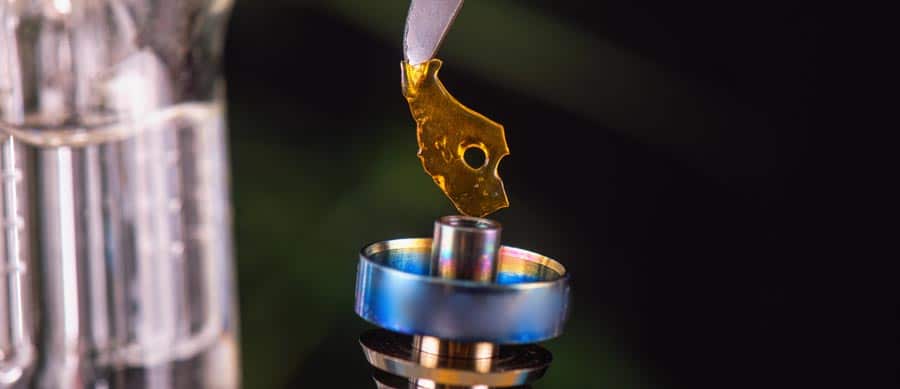Dabbing: It’s More than Just a Dance Move
Dabbing is still a common dangerous way to abuse marijuana.
Table of contents
Most people are aware that the “dab” is a dance move. You know … the one where the dancer drops their head into the crook of one bent arm while the other arm is raised straight out in the opposite direction? Well, despite what you know about the dance move, you should also be aware of the marijuana trend known as “dabbing.”
A few years ago, dabbing was the latest marijuana craze, and although it seems the fad has died down a bit, dabbing is still a common way to abuse marijuana. And a dangerous one.
What is Dabbing?
Dab is a type of marijuana concentrate and “dabbing” is the act of vaporizing it. Another name for dab is BHO which stands for butane hash oil.
These substances are concentrated oils from the marijuana plant that contain a very high amount of THC (Tetrahydrocannabinol). Generally, marijuana concentrates such as dab contain 40 to 80 percent THC, which is about four times more potent than the THC content in “high-quality” marijuana.1
The THC in marijuana is what makes users feel the pleasurable euphoria they’re after when abusing marijuana, so marijuana concentrates like dab are particularly enticing for marijuana users who are looking for a stronger high.
Dab looks a lot like butter or honey, so naturally, other slang terms include:
- Honey oil
- Budder
- Wax
- Ear wax
- Shadder
- Black glass
- Errl
- 710 (the word “oil” flipped upside down and backward)
Certain equipment is required to use dab. Typically, people use a hand-held blowtorch and a pipe to smoke it. First, users heat the pipe with the blowtorch and set the wax inside. The wax then heats and bubbles, producing a smoke that users inhale through the top of the pipe. As this process is fairly complex for first-time users, dabbing is more likely to be done by experienced marijuana abusers who want a stronger high.
How Dabbing Started
According to LiveScience, dabbing isn’t a new thing at all. It’s been around since the 1970s. Although only a small amount of drug users have historically done it, dabbing has recently become a bigger trend, particularly among teens and young adults. Some experts believe this trend is a result of the recent marijuana legalization in certain states, the commercial development of medical marijuana, and instructional videos and information being shared on social media and YouTube.2
What Dabbing Does to Your Lungs
Many people claim that dabbing is less harmful and causes less damage to the lungs than smoking non-psychoactive drugs, but this has yet to be proven with research.3 Some people also claim that the preparation process eliminates harmful bacteria, mold, and fungi, but this has not been proven yet either.
Researchers are still unsure if dabbing is harmful to users’ lungs, but studies show that it may be. According to a 2017 article published by Medical News Today, new research suggests dabbing exposes users to various carcinogenic toxins, suggesting that it could be very harmful to the lungs.4
Other Side Effects of Dabbing
Unfortunately, researchers haven’t done very much research on the side effects of dabbing so the long-term physical effects are largely unknown. However, abusing the plant form of marijuana can result in side effects like:
- Poor judgment
- Poor coordination
- Anxiety
- Panic attacks
- Increased heart rate (elevated risk of heart attack)
- Lung damage
- Hallucinations
- Paranoia
Abusing synthetic marijuana comes with even more disturbing, harmful, and unpredictable side effects.
Dabbing comes with additional risks outside of those that are associated with typical marijuana abuse. In fact, the physical risks of dabbing may be much worse, as a 2015 study found that more than 80 percent of marijuana extracts were contaminated with pesticides and poisonous chemicals that were left behind from the extraction process.5
Marijuana users can create dab at home with a process called blasting, but it is also very dangerous and may result in fires, burns, or even explosions. However, in states where medical marijuana is legal, users may purchase butane hash oil extracts.
Additionally, a scientific study from 2014 found that people who abused dab reportedly built up a higher tolerance, which, in turn, produced stronger withdrawal symptoms.6
Marijuana Abuse: Dabbing, Smoking, and Edibles
Although marijuana is largely viewed as a less harmful drug than other illegal substances like meth, bath salts, or heroin, the abuse of marijuana in any form comes with dangerous risks and side effects. In any case, any form of long-term marijuana abuse may result in marijuana dependency.
Dabbing, smoking, and consuming edibles are all popular forms of marijuana abuse. Dabbing, or vaporizing the marijuana concentrates, is viewed as more of a marijuana trend, but smoking it or consuming it in edibles are other common ways people use dab.7
- Marijuana concentrates in edibles: Dab, a marijuana concentrate, may also be used by adding it to edible food products like brownies or tea.
- Smoking marijuana concentrates: People may also smoke dab by using water or oil pipes or by heating it in a glass bong.
The Dangers of Trends Like Dabbing
Drug trends like dabbing don’t just carry immediate physical dangers, but they also encourage drug abusers to try new things that may lead to addiction and dependence, overdose, or even death.
For example, one recent drug trend called “wasping” involves users spraying their meth with bug spray or crystallizing the bug spray with heat before shooting it up via injection. Drug users in Ohio were doing this with the goal of achieving a stronger high, but it was having extremely dangerous and even deadly consequences.
Heating heroin and then inhaling it is another recent drug abuse trend known as “Chasing the Dragon.” This method of heroin abuse can cause irreversible brain damage and dementia, but according to Gizmodo, inhalation of heroin is increasing in the U.S., especially in cities and areas that are east of the Mississippi.8
In America, injecting heroin is still the most common method of abuse, but more adults and teens are inhaling it. In 2014, 21 percent of all heroin-related inpatient hospital visits among 12 to 19-year-olds involved inhalation.8
Get Help for Marijuana Addiction Today
If you are dependent on or addicted to marijuana, getting professional help is the best way to address the physical dependence and the behavioral issues that caused it. Marijuana detox will clear your body of the drug and help you get sober in the most comfortable and safe way possible.
Marijuana withdrawal symptoms can be uncomfortable, but you don’t have to go through withdrawal alone. The experienced staff at Briarwood Detox Center are trained to recognize the signs of marijuana withdrawal and treat them effectively, to help you successfully get through withdrawal and move on to the next phase of your addiction treatment.
Call Briarwood Detox Center today to speak with an admissions specialist about our medical detox programs.
References:
- https://www.justthinktwice.gov/facts-about-marijuana-concentrates
- https://www.livescience.com/51202-marijuana-dabbing-trend.html
- http://pediatrics.aappublications.org/content/136/1/1
- https://www.medicalnewstoday.com/articles/319595.php
- https://www.ncbi.nlm.nih.gov/pubmed/26558460
- https://www.ncbi.nlm.nih.gov/pubmed/24930049
- https://gizmodo.com/more-people-are-inhaling-heroin-and-its-destroying-bra-1827450399
- https://www.getsmartaboutdrugs.gov/content/what-you-should-know-about-marijuana-concentrates-honey-butane-oil
Break Free From Your Addiction Today
(in 3 easy, confidential steps)

Verify your insurance
Complete our fast, free, and easy verification process over the phone to determine the extent of your insurance coverage.

Make an informed decision
We will provide personalized placement recommendations based on your insurance, treatment needs, financial situation, and schedule.

Contact us
Call (888) 857-0557 or fill out our online form for a free and confidential personal consultation with an admissions specialist.








